Chickens and feather lice
The downy eater belongs to the class of parasites that live on the surface of the down and feather cover and on the skin of chickens. The reason for its appearance is the contact of layers with infected birds of other species or individuals that are carriers of the pathogen. In addition, the appearance of parasites such as lice occurs as a result of a violation of sanitary conditions in the chicken coop and in the absence of preventive measures that create an unfavorable habitat for the parasite. This type of insect is characterized by good survival rate and can exist on various surfaces of the chicken coop, outside the host's body for a long period of time.
The downy eater larvae go through different stages of the life cycle, being located in the nutrient layer of the dermis, and reach sexual maturity within 0.5-1 months. The presence of these insects on the skin surface causes severe itching in the bird, provoking scratching, which in turn increases the likelihood of infection of the affected areas when they come into contact with a carrier of pathogenic microflora. Among the effects that the presence of lice on the body of chickens provokes, experienced experts call a decrease in the body's resistance and egg production of layers.
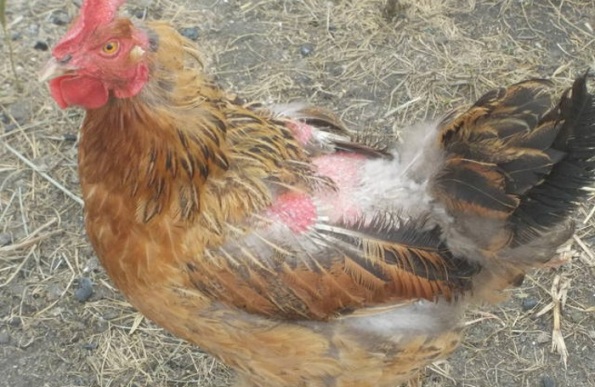
To reduce the damage to the skin of the chicken by insects, it is necessary to timely process the surface of feathers and down using special chemicals and emulsions. Given the high degree of mobility of the parasite, its good survival rate and the rate of spread among the livestock, in order to reduce the likelihood of infection, it is recommended to carry out preventive measures, including the treatment of premises with chemical aerosols and smoke.
Content
Who are downy eaters, the reasons for their appearance in chickens
Parasites are localized on the surface of the wings and back of chickens and use feathers and down as food, eroding their base and violating the integrity of the cover. Having appeared on the body of the host, which, as a rule, becomes a young laying hen, a tick-type insect is attached to the body with its claws.
Important! The difficulty of detecting the downy eater lies in the high degree of its mobility with its small size, not exceeding 2-5 mm, and the color that merges with the color of the skin of the bird. Experts describe the insect as an organism of the mite class, having a narrow oblong body shape and a triangular head, on which a distinct gnawing apparatus is located.
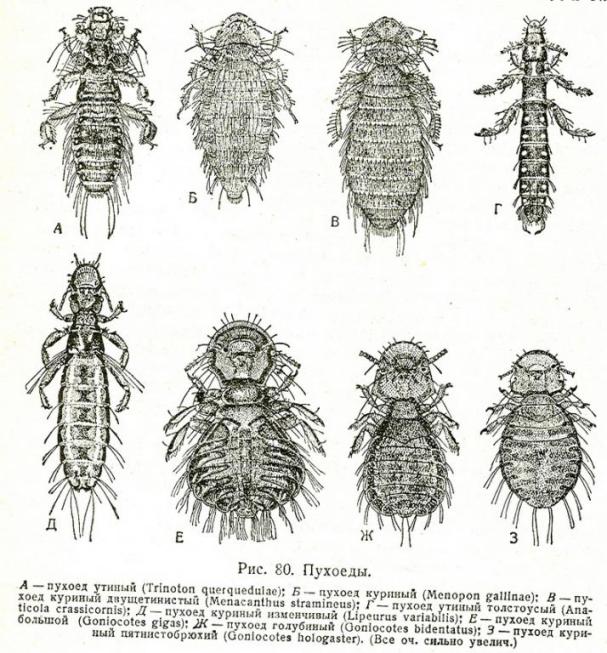
The color of feather eaters can range from light shades of brown to yellowish tones, while the number of individuals on the body of a chicken at a time can reach 10 thousand. Such a high indicator of the number of pests is explained by the short period of the life cycle of the parasite and the rapid achievement of sexual maturity, at which each larva itself turns into an individual, increasing the number of lice according to the laws of geometric progression. The breeding process involves the laying of eggs by the lice in the area of the base of the feathers, near the surface of the skin. After 0.5-1 weeks, offspring appear from the eggs, the period of development of each of whose members to adults is no more than a month. Infection with parasites occurs during the day when healthy individuals come into contact with an infected laying hen or hen hen with a chicken.
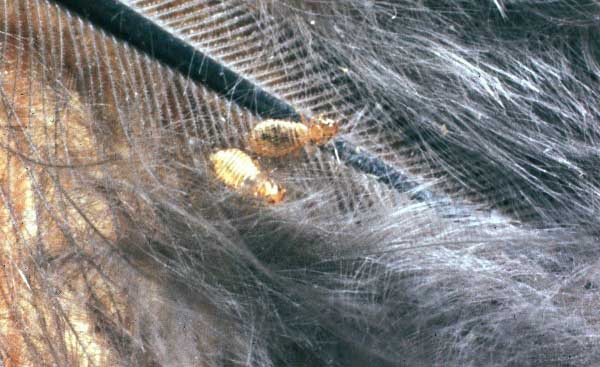
Experienced farmers identify as factors and reasons for the high rate of spread of downy eaters in the chicken coop:
- The absence in it of containers with sand and ash used by chickens for bathing at the primary signs of parasite infestation.
- A large number of individuals per unit area of the premises.
- Deviation from the recommended conditions for keeping birds in the chicken coop and ignoring preventive measures.
Note! The successful survival of the species provides a lack of sensitivity to fluctuations in temperature conditions of the environment, the possibility of long-term survival outside the host's body and a long existence without food intake. At the same time, a feature of this type of lice is parasitism on the body of one laying hen, when, in the event of its sudden death, the existence of the peroed inhabiting it is cut off.
Symptoms of damage in chickens by a downy eater
The most obvious sign of the presence of lice on the body in chickens is the local absence of feather cover. This trait is especially evident in such laying hens as Silk Chinese and Sibright. However, this type of diagnosis allows you to determine the presence of ticks with a high degree of damage to the chicken body.
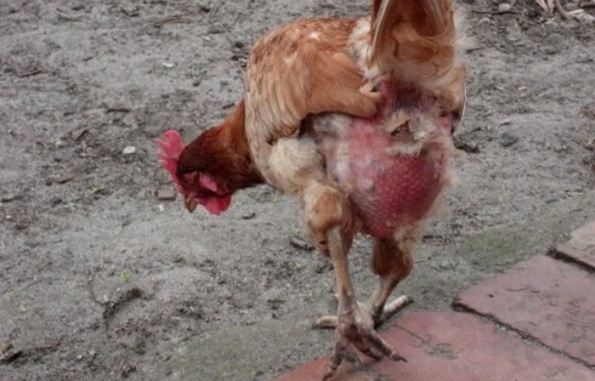
Experienced breeders, however, cite a number of signs to recognize the presence of feather eaters in chickens in the early stages of infection, including:
- weight loss and weakening of immunity in birds, due to the loss of nutrients consumed by the body to ensure the vital activity of lice;
- an unusually agitated state in a bird, frequent attempts by the hen to climb under the feathers;
- decrease in egg production, reaching 10%;
- slow development of young stock, poor weight gain, which is especially clearly manifested for chickens of the meat direction, for example, forverk and broilers;
- decreased appetite in infected individuals.
If it was not possible to detect pathology in the early stages, later manifestations of chewing lice on the body of a chicken can be recognized by such signs as:
- repeated at low frequency, pinching and scratching of feathers;
- the appearance on the territory of the hen house of fallen feathers, a distinctive feature of which is the presence of a eaten away feather rod;
- detection of inflammatory processes in the area of the mucous membrane of the eyes;
- itching and irritation of the skin, determined by farmers by more frequent movements than usual to get rid of the irritant;
- the presence of inflammatory processes in the area of the skin (dermatitis), determined during examination in a bird;
- detection of skin areas combed when trying to get rid of parasites on the body of layers.
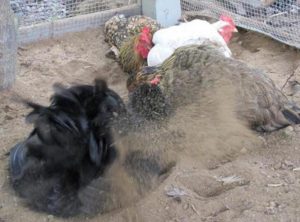
In the presence of the listed signs, it is recommended to urgently place infected individuals in a separate room for quarantine, since the downy eaters are distinguished by their ability to very quickly spread among the herd. In case of doubt about the nature of deviations in the behavior or health of the laying hens, you should immediately seek the advice of a veterinarian, since the period required to get rid of feathers directly depends on the degree of damage to the livestock.
Methods and methods for the treatment of downy eaters in chickens: chemical and folk
Among the breeders, two methods of treating chickens from puffy eaters are known using chemicals and traditional medicine. However, in both cases, the process of expelling ticks from the bird's body is a laborious and long-term operation, the duration of which, depending on the degree of damage, can take from several weeks to 6 months.
Chemical methods of dealing with downy eaters include:
- Treatment of livestock and chicken coop premises with drugs that have a wide range of effects, for example karbofoswidely used in agriculture to control ticks and pests. Its effectiveness is due to a combination of acricidal and insecticidal properties.
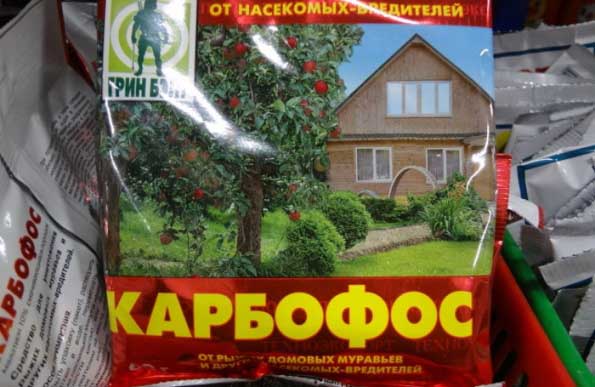
- Sufficiently effective against fleas, ticks and downy eaters such a remedy as delcid.
Video: treatment of premises from fleas, ticks and feather eaters with the drug "Deltsid"
- When performing skin treatment on the poultry, medications such as sprays can be used. Insectol, Bars, Stronghold, Celandine, Arpalit, Nyuda and Neotomazan... Spray during insecticidal treatment should be sprayed at a distance of at least 15 cm from the skin surface of birds affected by the disease.
Video: treatment of chickens from feather-eating with Bars
- In addition to the listed funds, it is quite popular among farmers to treat the surface of feathers and down in chickens with drops frontline... In order to avoid transmission of infection from sick layers to healthy individuals, any therapeutic measures carried out to expel parasites must be performed in a crossover manner. It includes handling simultaneously with infected birds and chickens not affected by chewing lice. The drops are applied at the base of the feathers of the bird, ensuring the penetration of their active substance through the layer of fluff to the skin.
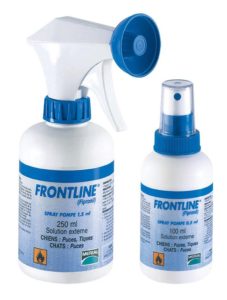
Note! In order to avoid intoxication when the bird tries to peck itself at the site of treatment, experts recommend tying the beak for the duration of the drug.
- Experienced breeders claim that with proper processing, the death of larvae and sexually mature individuals of the chewing lice occurs within a few minutes.However, the effect of the active substance does not affect the eggs of the parasites, therefore, it is recommended to repeat the treatment against ticks after a time sufficient for the development of all individuals from eggs to the larval stage (1-1.5 weeks).
It should be noted that the use of chemicals to combat chicken lice is not a gentle treatment. In this regard, for the treatment of chickens from chewing lice, it is recommended to use the surface treatment of the skin using traditional methods that provide a softer effect.
Among the most popular folk remedies used for insecticidal treatment of chickens against chewing lice, farmers call:
- chamomile infusion, which is an effective and safe agent used for anti-mite treatment of the skin of young animals. The prepared product is rubbed into the area of the down-feather cover of the bird, the operation is repeated every day until the desired effect is achieved;
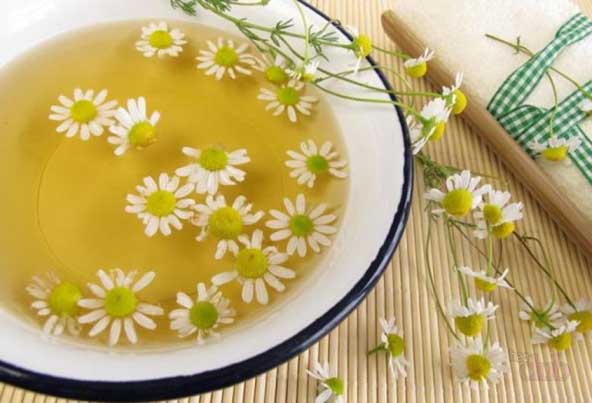
- powder from crushed leaves and wormwood color can be used as an alternative to chamomile infusion or used simultaneously with it.
- Getting rid of lice in adult layers and chickens, as well as preventing their appearance, is ensured by organizing a chicken coop on the territory sand-ash baths, located taking into account the provision of free access to them by any member of the livestock. To obtain a mixture, it is necessary to mix ash and sand in equal proportions and place it indoors or outdoors, in an area protected from precipitation.

However, not all traditional methods are equally safe for treating skin parasites in chickens.
Experienced breeders include among the less sparing traditional medicine methods against feather eaters:
- Processing with emulsions based on water or vinegar mixed with kerosene, the agent is used for anti-mite treatment in adult layers. Before carrying out the procedure, it is necessary to shake the composition, and then evenly apply it to the area of the base of the feather coating in chickens.
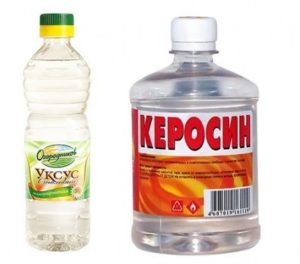
- A good alternative to the previous method is solutionobtained by mixing ammonia, kerosene and benzene. However, treatment of chickens with this agent is also contraindicated.
Experienced experts do not recommend using methods that ensure high efficiency in the treatment of adult chickens from chewing lice when carrying out therapy in young animals due to the content of aggressive chemical components in the composition.
Video: how to get rid of the downy eater in chickens
Measures for the prevention of downy eaters in chickens
In order to avoid infection of chickens with chewing lice and feather eaters, experts recommend a number of preventive measures, including:
- ensuring sufficient space, excluding the accumulation of a large number of individuals in a small area of the chicken coop area;
- daily processing of the chicken coop premises with the use of disinfectants;
- taking measures to exclude the ingress of impurities, rodents and dirt into the feed;
- organization of the air exchange and ventilation system in the room;
- ensuring timely change of litter to prevent contamination of birds with traces of their droppings.
Video: prevention of downy eater in chickens
Feathers and down lice are parasites that live in the area of the base of the feather and down cover on the skin surface of chickens. In addition to the negative impact that ticks have on the health of poultry, the presence of lice leads to a decrease in egg production, slower growth and the formation of muscle mass in chickens of the meat direction. With the timely detection of signs of insect damage to layers, the treatment period does not exceed several weeks. However, in a neglected state, treatment against parasites can take up to six months and be complicated by the presence of infection when the pathogen enters the areas of the skin damaged by the bird.Therefore, it is very important to detect in time and begin to engage in the removal of feathers in chickens.

